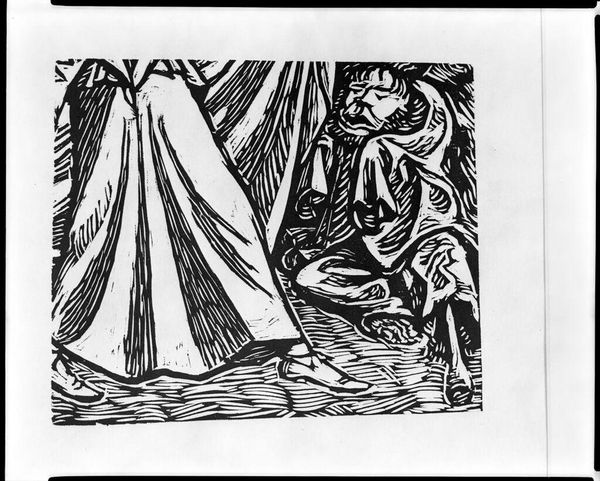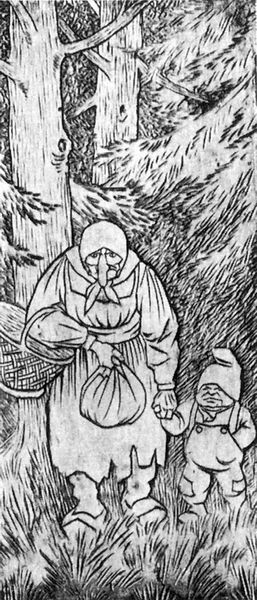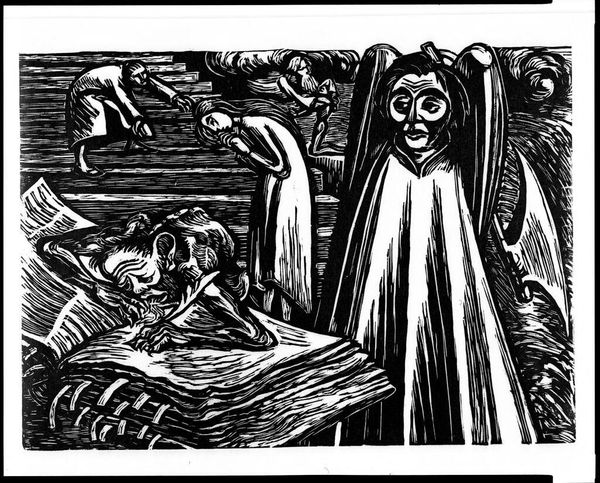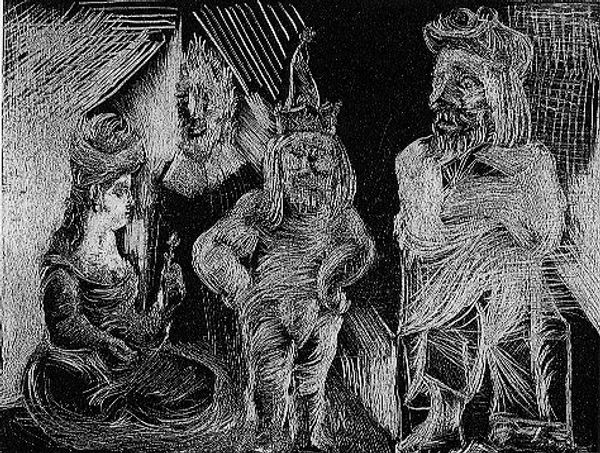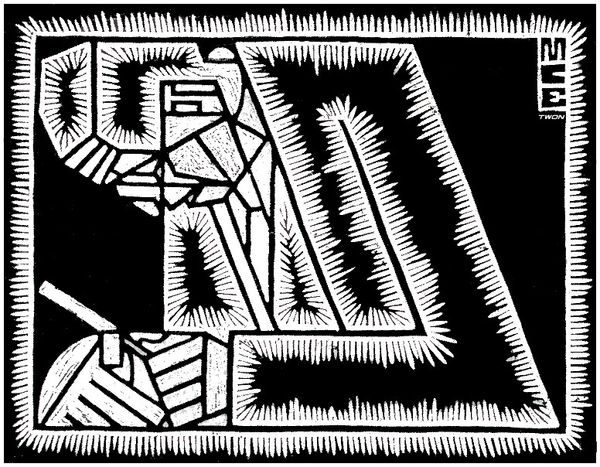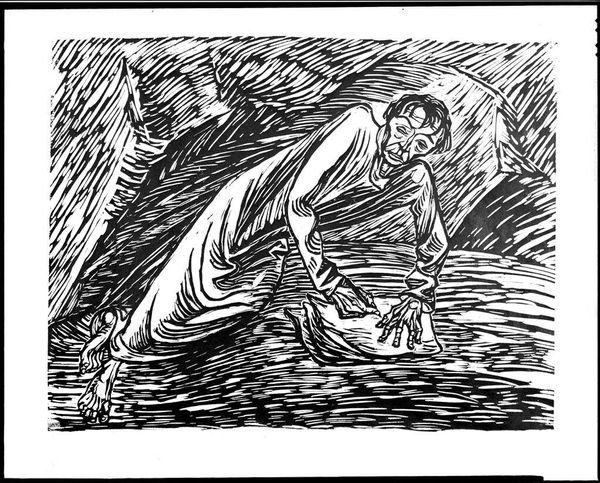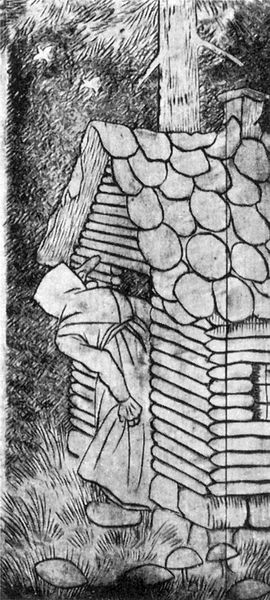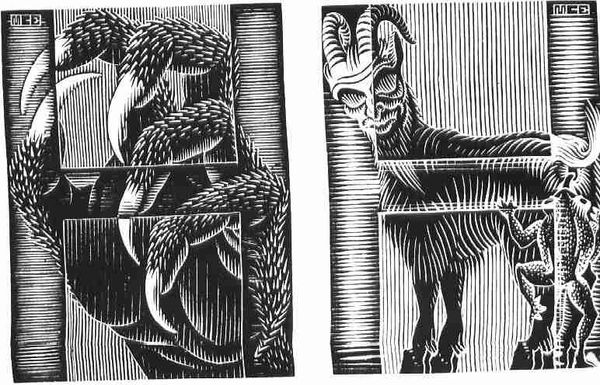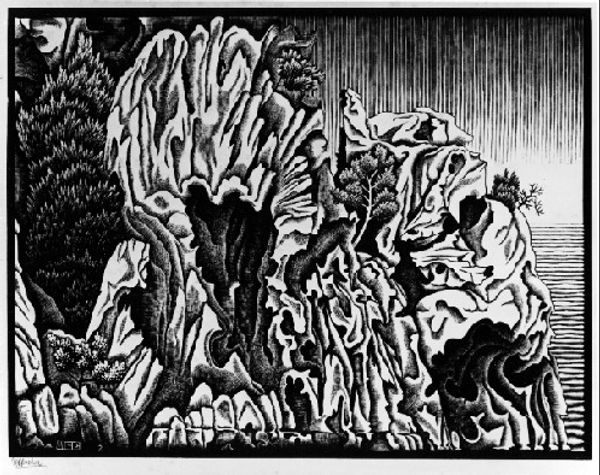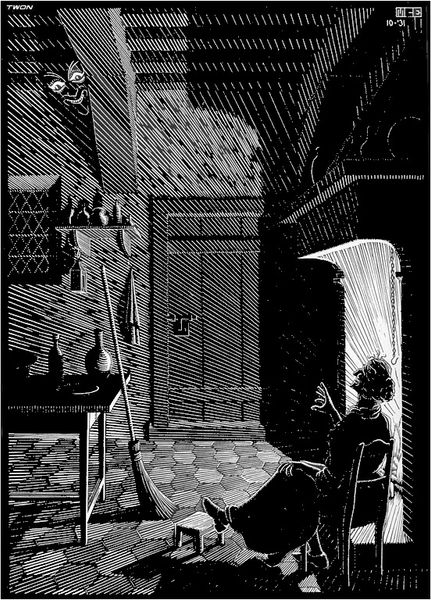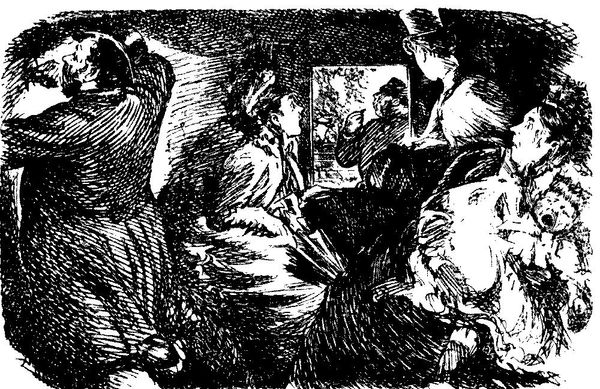
#
line-art
#
overwhelming detail
#
junji ito style
#
highly detailed
#
black colour
#
repetition of black colour
#
intricate
#
manga style
#
comic style
#
sitting
#
intricate and detailed
#
monochrome
Dimensions: 10 x 12 cm
Copyright: Marina Pallares,Fair Use
Curator: The somber mood of Marina Pallares’s 2003 woodcut print, "Esperando," really hits you right away, doesn't it? Editor: It does. The monochrome palette and high contrast lend it an immediacy. But tell me, what’s intriguing to you about it from a material perspective? Curator: Well, woodcut is an interesting medium here. Consider the process—each white line you see is where Pallares carved away the wood. This subtractive method, coupled with the evident labor, speaks to the physical effort involved in creating the image and affects how we think about consumption and art. The textures created using basic cutting tools provide such a variety within the constraints of black and white. Editor: True, the texture gives it depth and raw emotion. Socially, the image’s emotional impact is strong, tapping into universal feelings of loneliness, and perhaps, even abandonment. The figure's posture—head in hands—is a recognizable visual trope for despair. Curator: The repetitive lines could almost symbolize the cyclical, perhaps futile nature of waiting itself. Editor: Right. I’m curious about the setting too. The architectural elements – that pillar, the doorway – suggest a formal space, yet it's devoid of warmth. Is it a deliberate comment on societal structures and the isolating effect they can have? Are those even architectural elements? The flowers are curious addition in all that rigid construction. Curator: Perhaps! Also notice the patterned blanket with the stars—it gives a human element and contrasts so beautifully with the strict geometric nature of the place where the woman is. Speaking of materials, there is of course the paper that would have had to be factored in at some stage in terms of sizing the overall plate. Editor: That human touch brings us back to considering this piece as part of a broader artistic landscape—printmaking often democratizes art through reproduction. Considering the date, 2003, does this artwork engage with specific sociopolitical anxieties of that period in Pallares’ home context? Curator: Perhaps. These sorts of textures in prints are indeed reminiscent of bookmaking, and the dissemination of social or political images through graphic novels for example. The lines could serve to reinforce feelings of tension and claustrophobia. Editor: Thinking about it now, the distribution possibilities for art through affordable means becomes much more appealing from a historical perspective as well, offering the artist a place in the public dialogue. Curator: I agree, and this adds another layer to the art! Editor: An unexpectedly intricate artwork, both technically and contextually.
Comments
No comments
Be the first to comment and join the conversation on the ultimate creative platform.
